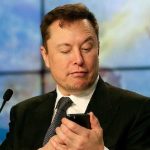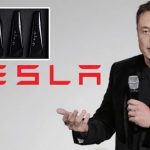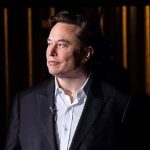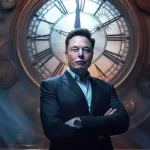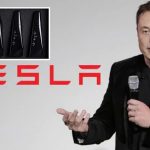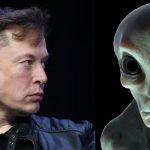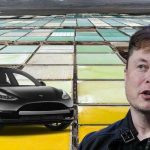Elon Musk: From 12-Year-Old Boy to Tech Billionaire

Elon Musk: From 12-Year-Old Boy to Tech Billionaire 🌟🚀
Picture this: You’re 12 years old. What’s filling your days? Maybe it’s kicking a soccer ball in the backyard, flipping through dog-eared comic books, or battling pixelated foes on an Atari. For most of us, 12 is a blur of carefree play and small wonders. But for Elon Musk, born in Pretoria, South Africa, in 1971, age 12 wasn’t just a milestone—it was a launchpad. At that tender age, he didn’t just dip his toes into technology; he dove headfirst, crafting his first creation and planting the seeds of a billion-dollar destiny. Can you believe it? Let’s rewind to that pivotal moment and trace how a boy with a computer and a dream became the tech titan we know today.
At 12, young Elon Musk wasn’t your average kid. While his peers roamed the sun-scorched streets of Pretoria, he was hunched over a Commodore VIC-20—a clunky, 5KB-memory machine that was his portal to the future. Armed with a manual and boundless curiosity, he taught himself programming, piecing together lines of BASIC code. The result? “Blastar,” a simple yet ingenious space-shooter game where players blasted alien invaders. It wasn’t Doom—think blocky graphics and basic mechanics—but for a preteen in 1983, it was a marvel. What’s more astonishing? He didn’t just play it with friends or stash it away. At 12, Elon sold “Blastar’s” source code to PC and Office Technology magazine for $500—a princely sum back then, equivalent to about $1,500 in 2025 dollars.
That $500 wasn’t pocket change—it was a spark. It validated his talent, stoked his passion, and whispered a promise: technology could be his ticket to something bigger. From that modest game to the sprawling empires of Tesla, SpaceX, Neuralink, and The Boring Company, Musk’s journey is a masterclass in dreaming, doing, and defying the odds. As of March 31, 2025, he’s not just a billionaire—he’s a beacon for anyone with a flicker of ambition. So, let’s unpack the “Blastar” story, explore how it fueled his ascent, and ask: What’s your “Blastar” waiting to be built?

The Boy and the Code: “Blastar” Takes Flight 🌌
South Africa in the 1980s wasn’t Silicon Valley. Tech was a fledgling frontier—home computers were rare, internet a distant dream. Elon, born to an engineer father and a model mother, was an odd duck: shy, bookish, bullied at school. Books like The Hitchhiker’s Guide to the Galaxy and sci-fi comics were his escape; they painted worlds he longed to shape. At 10, he got his VIC-20—a Christmas gift—and devoured its 300-page manual in days. “I was obsessed,” he later told Rolling Stone. By 12, that obsession birthed “Blastar.”
The game was straightforward: a spaceship, controlled by the player, zapped aliens across a starry void. Code unearthed in 2015 (shared on X) shows a 167-line creation—crude by today’s standards, but a feat for a kid with no formal training. Elon didn’t stop at coding it. Spotting an ad in PC and Office Technology, he mailed his floppy disk to the editors. Months later, a $500 check arrived—more than his dad’s monthly salary then, per biographer Ashlee Vance. On X in 2025, Musk mused, “Blastar was my first hustle—should’ve kept the rights!”
That sale wasn’t just cash—it was a signal. At an age when most kids hawked lemonade, Elon turned passion into profit. It lit a fuse: if a game could earn $500, what else could tech unlock? That spark carried him from Pretoria to Canada at 17, then to the U.S., where his empire took root.
From $500 to Billions: The Musk Trajectory 🚀
“Blastar” was no fluke—it was a preview. Fast-forward to 1995: Musk, now 24, co-founded Zip2, a digital city-guide startup. Sold for $307 million in 1999, it netted him $22 million. Next came X.com, morphed into PayPal, sold to eBay in 2002 for $1.5 billion—$180 million for Musk. At 31, he could’ve retired. Instead, he bet it all—$100 million on SpaceX, $70 million on Tesla, $10 million on SolarCity. Risky? Insane. Successful? Spectacularly.
By 2025, SpaceX’s 300+ launches and $350 billion valuation make it the private space king—Starship’s 2024 orbital win eyes Mars by 2029. Tesla’s 1.8 million EVs yearly and $1 trillion empire have electrified transport. Neuralink’s brain-chip trials hum, hinting at a mind-AI future; The Boring Company’s Vegas tunnels grow. Each venture echoes “Blastar”: a bold idea, self-taught grit, a leap into the unknown. On X this March, Musk posted, “Every company’s just a bigger Blastar—start small, dream big.”
What “Blastar” Teaches Us: Three Core Lessons 📚
Musk’s $500 game isn’t a cute anecdote—it’s a blueprint. Here’s what it reveals about his rise—and what it offers us:
- Passion is Key
Elon didn’t code “Blastar” for a grade or a boss—he did it because he loved it. Curiosity drove him to crack the VIC-20’s secrets; passion pushed him past bugs and crashes. A 2023 Stanford study ties passion to persistence—people who love their work outlast obstacles 70% longer. At 12, Musk wasn’t plotting billions—he was lost in code, a kid chasing joy. That fire fueled Tesla through 2008’s near-ruin, SpaceX past 2008’s flops. Lesson? Find your spark—coding, art, baking—and let it burn. Passion isn’t just fuel; it’s armor. - Self-Learning is Power
No teacher handed Musk a syllabus—he taught himself. Hours with that manual, trial-and-error coding, built “Blastar” from scratch. In a 2025 world of YouTube tutorials and AI mentors, self-learning’s never been easier—yet it’s still rare. Musk’s autodidact streak shines on: he learned rocketry for SpaceX, batteries for Tesla, no PhD required. “Knowledge is free if you grab it,” he tweeted this year. Takeaway? You don’t need a classroom—grab a book, a laptop, a wrench, and dive in. Discipline turns curiosity into mastery. - Dare to Dream, Dare to Do
Coding “Blastar” was bold; selling it was bolder. At 12, Musk didn’t shrink—he mailed his creation to a magazine, risking rejection for reward. That gutsy streak defines him: betting his fortune on SpaceX, sleeping on Tesla’s factory floor, pushing Neuralink despite skeptics. On X, he wrote, “Dreams don’t work unless you do.” It’s not enough to imagine—you’ve got to act, fail, act again. For us, it’s a shove: dream your “impossible”—a startup, a novel—then take the first swing. Courage turns “what if” into “what’s next.”
The Journey: A Mirror for Dreamers 🌍
Musk’s arc—from a $500 check to a $300 billion net worth—isn’t a fairy tale of effortless genius. It’s messy, human, inspiring. Bullied as a kid, he found solace in tech. At 17, he left South Africa with $2,000, crashing on relatives’ floors in Canada. Zip2’s early days saw him coding in a dingy office, sleeping on a couch. Tesla’s 2008 crisis drained him—he lived off loans. SpaceX’s third Falcon 1 crash in 2008 left him “gutted,” per X 2025. Yet, he kept going—passion, self-learning, daring.
By 2025, his wins dazzle: Tesla’s EVs cut global emissions; SpaceX’s Starlink connects 4 million; Neuralink’s chips spark hope. Flaws linger—X rants (2018’s “funding secured”), missed deadlines—but his grit shines brighter. On X, a fan posted, “He’s proof a kid with a dream can move mountains.” Musk’s not a god—he’s us, amplified. His journey whispers: your “Blastar” matters, no matter how small it starts.
Your “Blastar”: What’s Next? ⚡
“Blastar” wasn’t a masterpiece—it was a beginning. Musk didn’t stop at $500; he scaled to billions, reshaping worlds. What about you? At 12, he coded a game; at your age—15, 25, 45—what’s your “Blastar”? A blog no one reads yet? A sketch for an app? A recipe you’re tweaking? It doesn’t need to be perfect—it needs to be. A 2024 Harvard study found 80% of innovators started with a “rough draft”—Musk’s game was his.
In 2025, tools abound—AI to code, platforms to sell, X to share. Musk’s VIC-20 had 5KB; your phone has gigabytes. He mailed a floppy; you can post online. The gap’s closed—passion, learning, daring are all you need. On X this year, Musk tweeted, “Start where you stand—Blastar was my $500 spark.” Your spark’s waiting—will you fan it?
The Call: Create, Dare, Soar 🌠
Elon Musk’s story—from a 12-year-old coder to a tech colossus—isn’t about him alone. It’s a mirror, a megaphone, a nudge. Passion turned a boy into a builder; self-learning turned curiosity into cash; daring turned a game into a gateway. By 2025, his empires inspire millions—not because he’s flawless, but because he started. Tesla’s hum, SpaceX’s roar, Neuralink’s hum—they all trace back to that $500 check.
So, what’s your “Blastar”? That dream you’ve shelved, that idea you’ve doodled? It’s not too late, too small, too crazy. Grab your tools—laptop, pen, grit—and begin. Learn as you go, dare as you grow, and let passion steer. Musk changed the world with a game—you can too, one step at a time. Ready? The “impossible” awaits—code it, bake it, build it. Your billion-dollar journey starts with your first $500 spark. What’ll it be?


